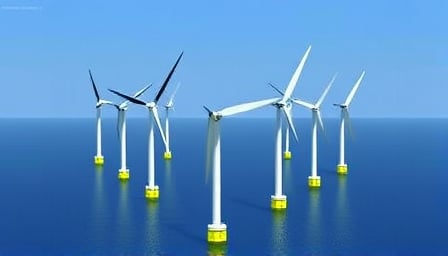Orsted AS Faces a Storm: Rights Issue, Regulatory Headwinds and Analyst Scepticism
Orsted AS, the Danish wind‑power juggernaut that once rode a wave of green‑energy optimism, is now grappling with a confluence of adversities that threaten to erode its market position and investor confidence. The company’s shares have been hemorrhaging value, while a federal pause on a key U.S. wind farm project casts a long shadow over its future cash flows. In response, Orsted has launched a hefty rights issue—$9.4 billion—offering new shares at a steep discount. Yet the market has shrugged, a reaction that the company’s CFO interprets as a green light for capital raising, even as leading analysts slash ratings and target prices.
The Trump Pause: A Blow to Orsted’s US Ambitions
The United States, once a burgeoning frontier for offshore wind, has become a minefield for renewable investors. President Trump’s administration has halted the construction of an Orsted‑backed wind farm that was poised to become a flagship project in the sector. This decision not only stalls a significant revenue source but also amplifies concerns about the company’s exposure to U.S. policy volatility. For a firm whose valuation heavily leans on long‑term, high‑scale projects, this pause is more than a hiccup—it is a systemic risk.
Rights Issue: A Desperate Measure or Strategic Pivot?
Orsted’s $9.4 billion rights issue is the most audacious capital raise in its history. By pricing new shares at a considerable discount, the company aims to inject liquidity and shore up its balance sheet amid tightening market conditions. Critics argue that this move dilutes existing shareholders and signals a lack of confidence in the company’s organic growth trajectory. Yet Orsted’s CFO maintains that the muted market response is a positive omen, suggesting that investors perceive the rights issue as a necessary lifeline rather than an admission of weakness.
The discount, while ostensibly generous, raises a critical question: Is Orsted willing to sacrifice equity value to survive, or is it prepared to confront the underlying business challenges head‑on? The market’s silence could indicate either complacency or an underestimation of the risks that loom.
Analyst Downgrades: A Wake‑up Call
Two of the industry’s most respected research houses—Santander and Morningstar—have taken the opportunity to recalibrate their outlooks on Orsted:
| Analyst | New Rating | Target Price (DKK) |
|---|---|---|
| Santander | Underperform | 121 |
| Morningstar | Sell | 170 |
Both analysts explicitly cite the company’s growing U.S. exposure and the destabilizing impact of Trump‑era energy policies. Their downgrades serve as a stark reminder that Orsted’s valuation is now being scrutinized under a more unforgiving lens. The price reductions also imply a reassessment of the firm’s growth prospects, potentially eroding the premium investors have historically paid for a clean‑energy leader.
Market Dynamics and Investor Sentiment
Despite the rights issue and the downgrades, Orsted’s shares have not collapsed. The muted reaction can be interpreted in multiple ways:
- Cautious Optimism: Investors may believe that the capital raise will provide enough runway to weather the U.S. policy uncertainty and to continue pursuing European projects that remain robust.
- Market Overconfidence: The lackluster response might reflect an underappreciation of the severity of the regulatory risks, suggesting that the market is still playing along with the green‑energy narrative without fully integrating the political realities.
- Structural Lag: Share prices often lag behind corporate actions. It could simply take time for the market to digest the full implications of the rights issue and the analyst downgrades.
In any case, the situation underscores a pivotal inflection point. Orsted’s ability to pivot—either by diversifying its geographic footprint, engaging more aggressively with policy makers, or tightening its operational efficiency—will determine whether it can transform the current crisis into an opportunity for sustained growth.
Conclusion: A Company at a Crossroads
Orsted AS stands at a critical juncture. The company’s willingness to raise capital at a discount signals desperation, but also a strategic attempt to fortify its finances. The pause in U.S. wind farm construction and the analyst downgrades highlight a looming threat that cannot be ignored. For investors, the question is not merely whether Orsted can survive this setback, but whether it can adapt its business model to thrive in a political climate that increasingly favors energy policy over market forces. The coming months will reveal whether Orsted can navigate these turbulent waters or whether it will be swept aside by the very forces that once propelled it to the forefront of renewable energy.
